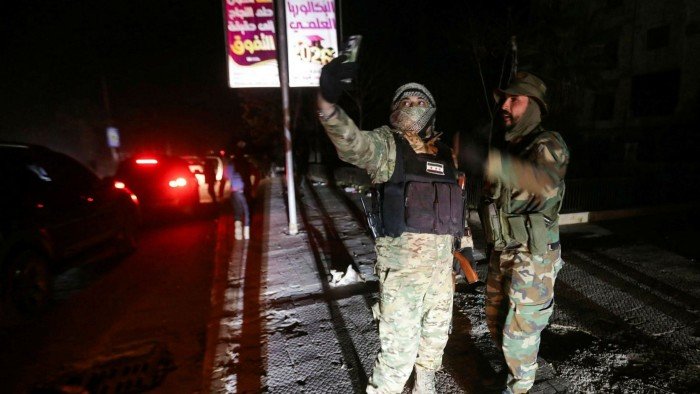US polling places struggle to find workers after surge in threats
Fears of violence have left some US election boards struggling to hire poll workers with less than three weeks to go before Americans vote in November’s presidential election.
Election administrators in battleground states Nevada, Arizona and Wisconsin are still recruiting temporary staff to set up polling equipment, sign in voters and report results, according to Power the Polls, a non-partisan poll worker recruitment group. Officials in Maryland, Ohio and Florida are also still hiring staff for election day.
“The challenge [comes from concerns about] the safety and security of poll workers,” said Isaac Cramer, executive director of the election board in Charleston County, South Carolina. “I know that was a top concern of people who have left.”
Threats against local officials surged in 2020 after then president Donald Trump and his supporters attempted to subvert the results of that year’s presidential vote, falsely claiming that election workers had overlooked widespread fraud at the ballot box. US courts dismissed the claims.
In one case, hundreds of Trump supporters charged a Detroit convention hall where volunteers were counting absentee ballots in 2020, banging on windows and chanting “stop the count”.
Reuters reported in 2021 that it had found more than 100 threats of death or violence made to election workers and officials and the US Department of Justice has warned that poll workers may experience harassment this November.
A survey conducted by the progressive non-profit Brennan Center for Justice found that 38 per cent of election workers have experienced threats, harassment or abuse, with seven in 10 saying threats had increased since 2020.
Of the election administrators surveyed by the Brennan Center, 40 per cent said they had added further security measures to election offices and polling stations, such as installing bulletproof glass and panic buttons to help staff quickly summon law enforcement.
The threats have prompted large numbers of officials to step down, meaning that one in four election administrators will be running their first presidential election next month, the Brennan Center estimates. Two hurricanes that destroyed polling places and disrupted the delivery of mail ballots in the south-east earlier this month also added additional logistical complications.
“That’s what’s been so sad for me,” Cramer said, referring to incidents during the primary elections for the 2022 midterms in which election monitors filmed and called the police on poll workers in Charleston County. “For the last four years, there’s been this undermining of the integrity of the elections and it’s ultimately pointing to me and other people in my position saying that we do not cherish the values of free and fair elections, and we do.”
“A lot of people are [staffing polling places] to serve their local neighbourhood and to give back and not to have the microscope on them [and be falsely accused of] doing something illegal,” Cramer added.
Unlike in other large democracies, US elections are operated by more than 5,000 separate jurisdictions, all of which must recruit and train their own poll workers.
While many election boards said they had an easier time filling roles than when the Covid crisis disrupted voting during the 2020 presidential election, others say they are still looking to hire even as early voting has begun.

Administrators need to hire approximately 645,000 workers to staff nearly 95,000 polling stations across the country, according to a 2022 report by the US Election Assistance Commission. It is a feat that more than half of jurisdictions told the agency was “very or somewhat difficult”.
Most US poll workers have historically been over 60 years of age, according to the EAC, but many in that group “hung up their hats” ahead of the 2020 elections for fear of catching Covid-19, said Power the Polls’ Marta Hanson.
Now election administrations are racing to replace them. Registered voters with the skills to operate devices such as iPads and who are fluent in multiple languages are most in demand, according to Ryan Pierannunzi of the non-partisan voting rights organisation Fair Elections Center.
The need has led some election boards to try novel approaches to filling election jobs. Charleston County has used a recruiting company to help it reach its goal of hiring 2,000 poll workers while Bergen County in New Jersey hired 350 high school students to work eight-hour shifts at its polls after the state lowered its minimum age requirement for poll workers to 16. Many are too young to vote.
At the same time, rightwing groups including True the Vote are encouraging their supporters, many of who deny the result of the 2020 election, to become poll workers so they can “monitor” this year’s count.
Despite the challenges, Carolina Lopez of the Partnership for Large Election Jurisdictions, said administrators had worked to improve security and transparency to ease any concerns about election integrity.
“I have never seen a more prepared elections administration community than I have this year,” said Lopez, a former election administrator in Florida.
Fred Sherman, the election commissioner for Johnson County, Kansas, said that his office initially had “a really great response” to its calls for poll workers and received more than 1,000 applications. But he is still recruiting staff for election day because there is significant “attrition” after workers learn how tough the job is during training sessions.
In Johnson County, poll staff work 15 hours on election day, starting at 5am, for between $150 and $200.
Planning an election “is like trying to predict a hurricane”, Sherman said. “You don’t know if it’s going to be a magnitude three, four, or five . . . and once it’s happening there is not a whole lot you can do to change the course of it.”
, #polling #places #struggle #find #workers #surge #threats

